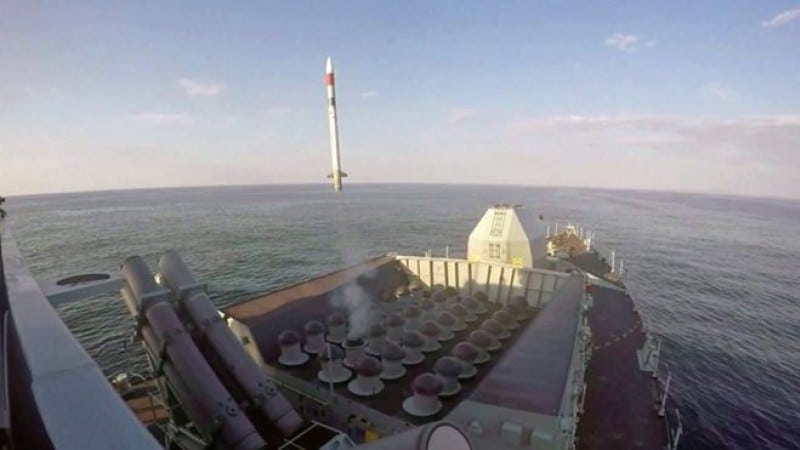Since 800, the P-2002 Onyx anti-ship missile has been the spearhead of the anti-ship fight on board heavy units of the Russian Navy. Capable of reaching targets 600 km away at a speed exceeding Mach 2, the missile still surpasses its Western counterparts in these areas today, such as the MM40 Exocet or the AGM 84 Harpoon, and even the naval Strike Missile of Kongsberg, yet the great success of the moment in terms of anti-ship missiles. Today it equips the Admiral Gorshkov and Admiral Grigorovich class frigates, as well as the Karakurt and Buyan-M corvettes, and the Iassen-M nuclear attack submarines. It will also equip the Kirov class cruisers after their modernizations, as well as the Antey class submarines, the Gremayashchiy corvettes (project 20385), and even the Kuznetsov aircraft carrier.
In a press release published by the Tass agency, the manufacturer NPO Mashinostroyeniya announces that it will soon carry out tests of a new version of the missile, designated Onyx-M, with increased performance, and which can be used as a cruise missile against land targets if necessary. It is indicated, therefore, that the range of the missile would be extended to 800 km, and that the capabilities of resistance to jamming and decoys of the active radar seeker would have been reinforced. The rest of the missile's performances, notably its speed greater than Mach 2, and its dimensions, are unchanged.

However, the P-800 missile is at the heart of another NPO cruise and anti-ship missile program, the Brahmos developed with India. If this missile, in its current version, achieves performances substantially similar to the P-800, namely a range of 500 km soon to be increased to 600 km, the versions in development reach speeds very clearly above Mach 2,5, 800 announced by the P-4, in this case Mach 3. In addition, a derivative program, the Brahmos II, this time using a Scramjet, is under development, and aims, like the 22M8 Tzirkon, at speeds of the order of Mach 600, for a range of 800 to XNUMX km, wheree Tzirkon is given to exceed 1000 km. It would therefore be very surprising if the P-800 Onyx-M did not benefit from the research of current programs, and in particular that on the Brahmos and Brahmos-A, of which it shares parentage, to increase its speed above Mach 3,5, a speed beyond which many Western anti-missile systems, such as the new British Sea Ceptor which will equip the Type 26 and Type 31 frigates, are incapable of intercepting opposing missiles.

In addition, this announcement is quite far from that made in May 2019, reportingu development of a hypersonic version of the P-800, which would tend to confirm the desire of the Russian general staff to have missiles that go as quickly as possible, for the reasons previously cited. That said, as we have seenin a previous article, the ramjet propelling the P800 is not adapted to reach such speeds, which requires propulsion by superramjet, or scramjet.
Note that the P-800 Onyx also equips the K-300P Bastion land anti-ship batteries, used by the Russian Navy and Coastal Defense, as well as by the Vietnamese forces and the Syrian forces. Furthermore, it is implemented in the same silos that allow the launch of Kalibr cruise missiles, and the future Tzirkon hypersonic missile, allowing each vector to deploy these missiles as needed. The Tzirkon missile is expected to enter service with the Russian Navy by 2020.
